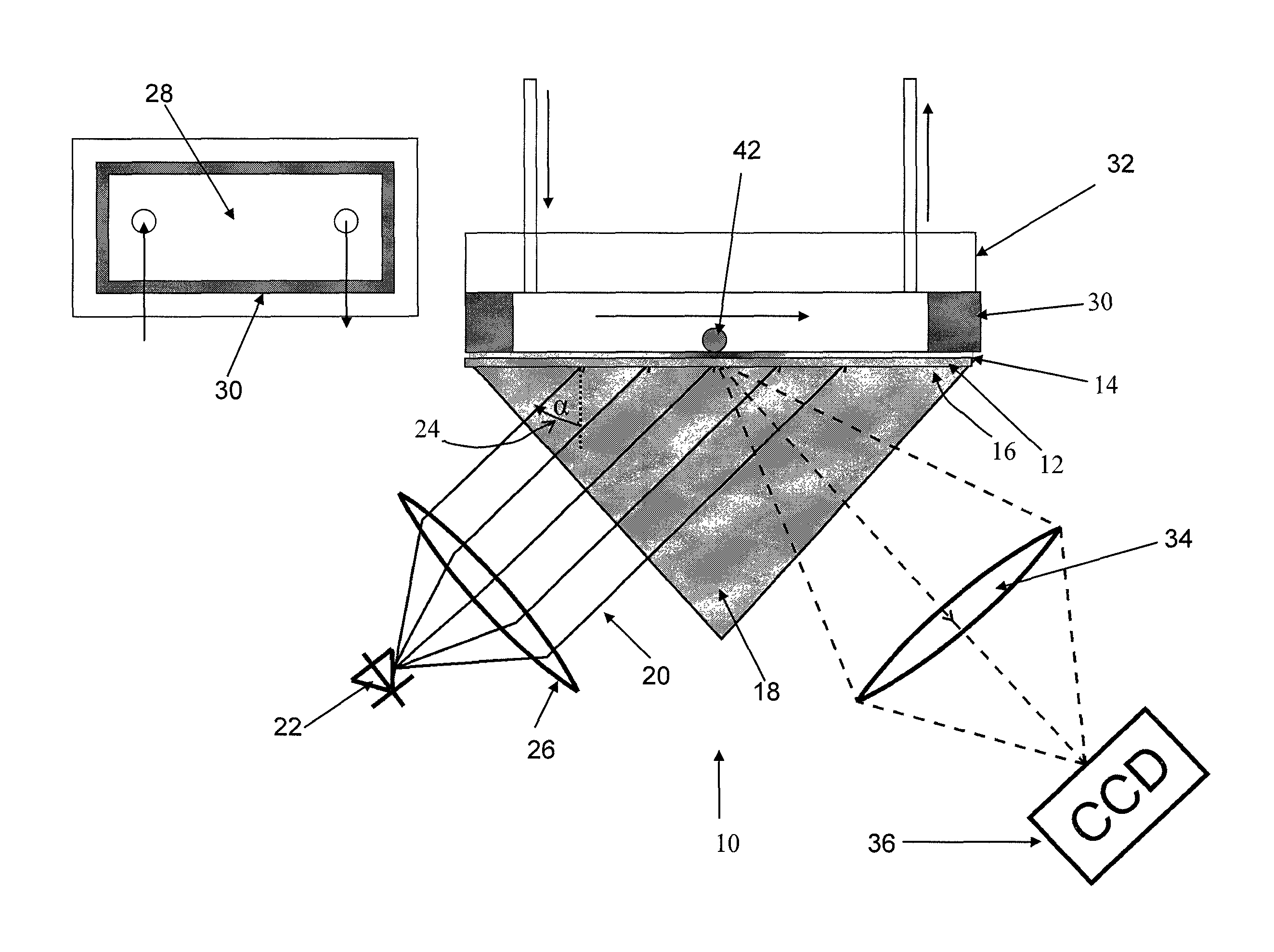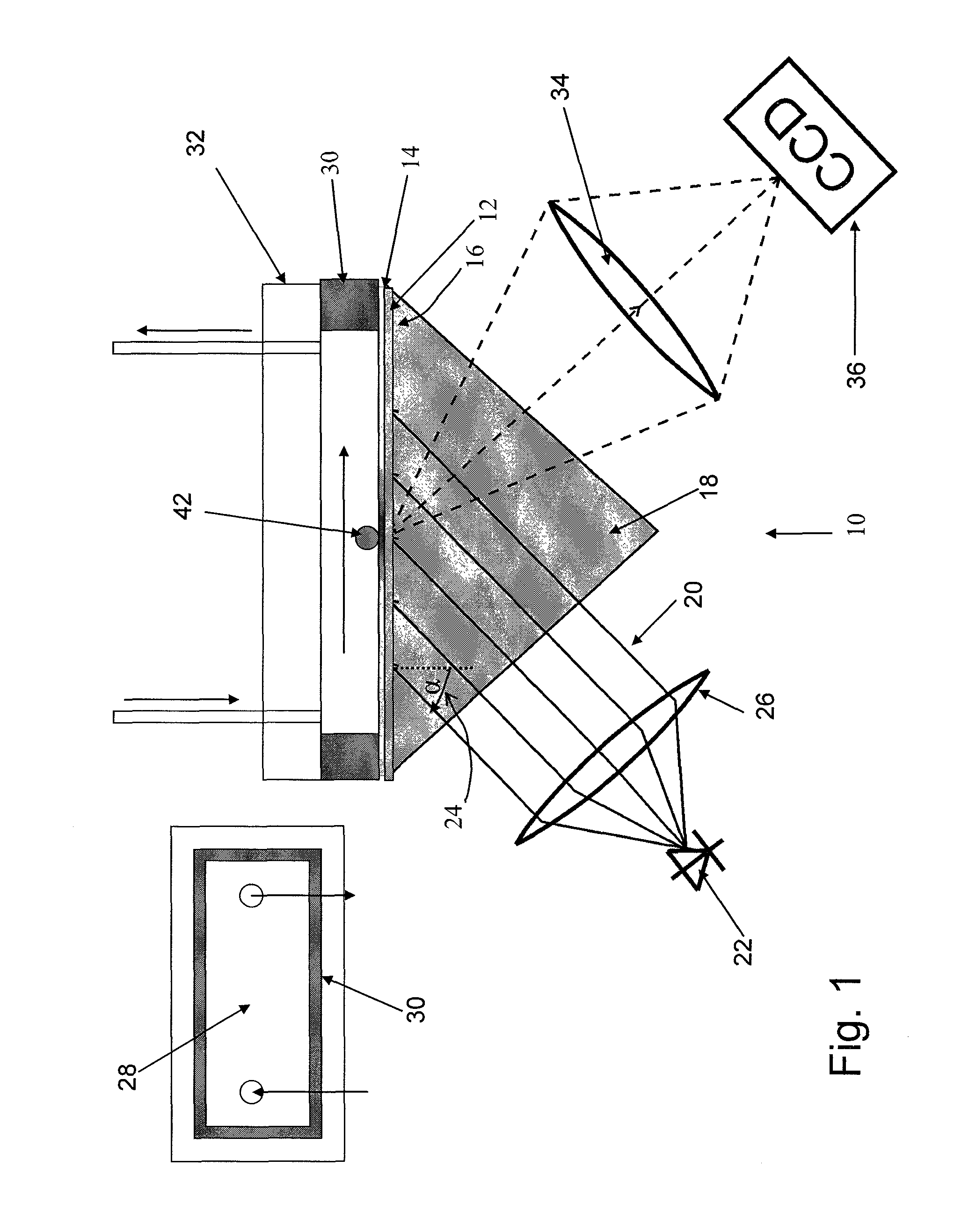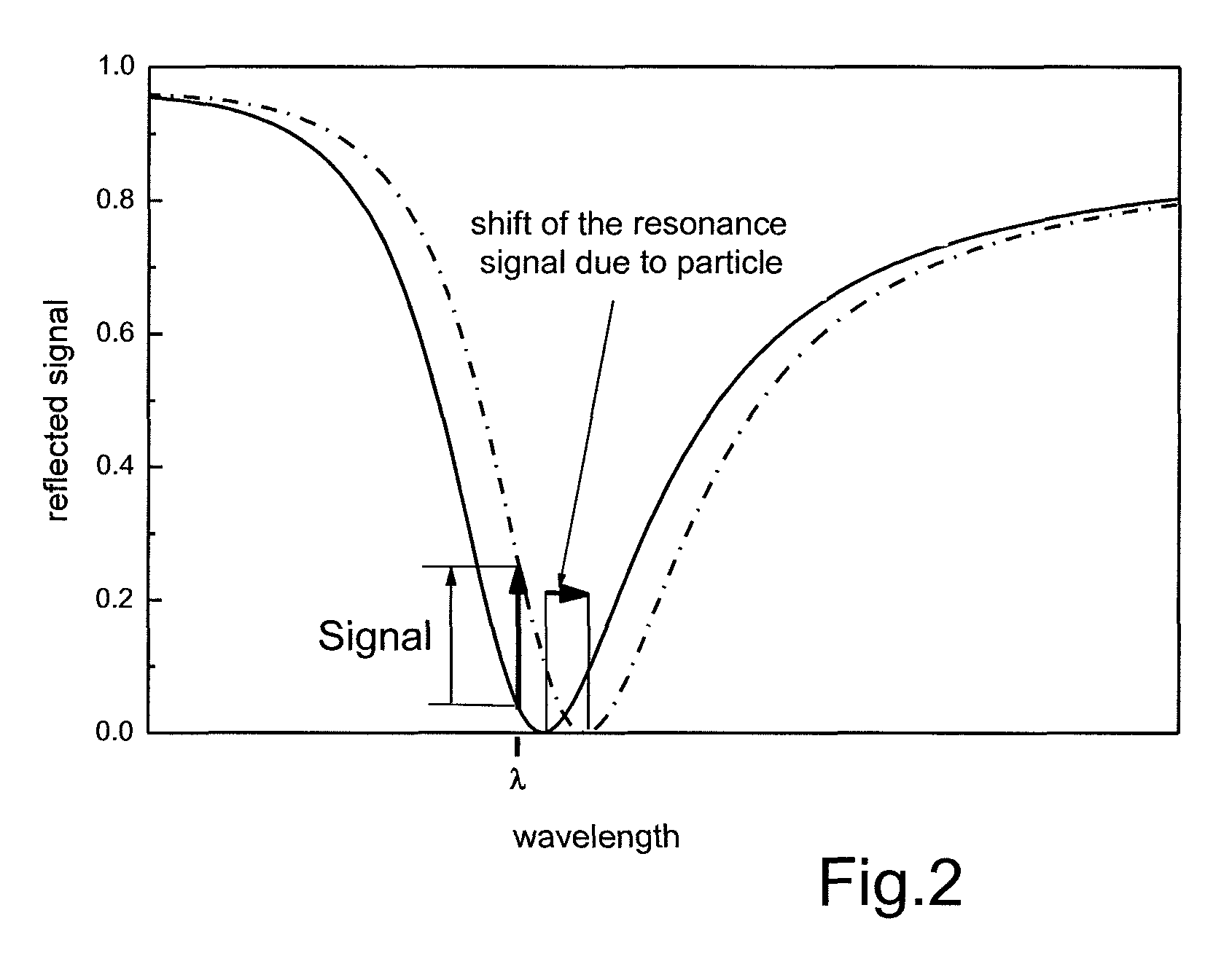Method for high-resolution detection of nanoparticles on two-dimensional detector surfaces
a detector surface and nanoparticle technology, applied in the field of surface plasmon resonance microscope, can solve the problem that individual particles cannot be detected with this method, and achieve the effect of a strong change of reflectivity
- Summary
- Abstract
- Description
- Claims
- Application Information
AI Technical Summary
Benefits of technology
Problems solved by technology
Method used
Image
Examples
Embodiment Construction
[0043]FIG. 1 shows a Kretschmann assembly in imaging configuration which is generally denoted with numeral 10. Such an assembly 10, as such, is known. The way of operation of a surface plasmon spectrometer, therefore, need not be described here in greater detail. A glass plate 12 is coated with a 50 nm gold layer 14. The side 16 of the glass plate 12 opposite to the gold layer 14 is fixed to a prism 18. Immersion oil is used for fixing and improving the optical contact.
[0044]The gold layer 14 is illuminated with radiation 20 from a superluminescent diode 22. An example for a suitable diode 22 is a QSDM-680-9 by Qphotonix emitting at a wavelength of about 670 nm, in the visible range. The illumination is effected through prism 18 with fixed incident angle 24. Contrary to a Laser as a radiation source, a superluminescent diode has no irregularities on the illuminated surface (speckles). The incident angle 24 is selected on the left side of the resonance minimum, i.e. with a smaller an...
PUM
| Property | Measurement | Unit |
|---|---|---|
| diameter | aaaaa | aaaaa |
| diameter | aaaaa | aaaaa |
| diameter | aaaaa | aaaaa |
Abstract
Description
Claims
Application Information
 Login to View More
Login to View More - R&D
- Intellectual Property
- Life Sciences
- Materials
- Tech Scout
- Unparalleled Data Quality
- Higher Quality Content
- 60% Fewer Hallucinations
Browse by: Latest US Patents, China's latest patents, Technical Efficacy Thesaurus, Application Domain, Technology Topic, Popular Technical Reports.
© 2025 PatSnap. All rights reserved.Legal|Privacy policy|Modern Slavery Act Transparency Statement|Sitemap|About US| Contact US: help@patsnap.com



